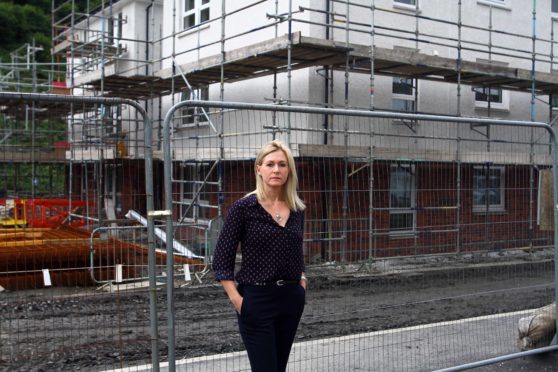A call has been made for a major review of Oban’s struggles with drug addiction after it emerged the local health partnership has lost track of the scale of the problem.
A Freedom of Information request was lodged by the Press and Journal after a bag of dirty needles was found dumped near a residential area of the town.
Heroin use in the town is said to be increasing and the FOI – alongside anecdotal evidence from users – appears to show growing demand for the local needle exchange service.
Efforts to compare figures for those using the needle exchange, methadone programme and harm reduction services between 2014 and 2018 were, however, impossible.
Due to changes in dispensing arrangements and collation methods “no direct comparison can be made between current figures and those prior to 2015/16”, a spokesman for the NHS Highland Argyll and Bute Health and Social Care Partnership said.
Figures obtained by the FOI inquiry nonetheless revealed that in August 2018 there were 21 “clients” using the needle exchange service. In August 2017 there were 17; August 2016 16 clients; August 2015 16 clients and August 2014 12 clients.
A spokesman for NHS Highland explained that this does not mean 21 different people used the service in August as a person using the service, but not registered, is counted every time they come in during that month, while people who are registered are only counted once, even if they use the service several times in the one month.
While the figures are not able to give an exact number of people using the needle exchange, they show an increase in activity.
Oban Councillor Julie McKenzie, a former drug worker, said: “It’s of serious concern to me that the Health and Social Care Partnership appears to be unable or unwilling to shed light on the current extent of Oban’s drug problem.
“The issues seen with problem drug use in the area are not new and funding has historically been targeted at achieving positive outcomes for service users.
“Anecdotal evidence certainly points towards the fact that many drug users aren’t currently in touch with services and these figures appear to back this. From the community’s point of view, it’s vital that we are able to quantify the true nature and extent of the problem.
“The time has come for an urgent and comprehensive mapping exercise to ascertain the true extent of the problem followed by a review of service provision. Only then can we be assured that local services are tailored to meet need and that funding is being allocated correctly.”
>> Keep up to date with the latest news with The P&J newsletter
One long-term heroin user in Oban spoke to the Press and Journal and said: “Previously the needle exchange was only at Market Street, they introduced another one in Boots round about 2014.
“Clearly there is an increase in demand for needles if they are doing that.
“People don’t want the stigma of using the needle exchange so they ask other users to go in for them.
“Those people who use the service are getting needles for other users. I have done it for people who won’t go in. It’s better than them using dirty needles.
“There are definitely more and more people using, not necessarily injecting, but smoking.”
A spokesman for the Argyll and Bute Health and Social Care Partnership said: “We provide a range of support mechanisms in Oban, and Argyll and Bute generally, for people who use drugs.
“These include harm reduction nurses, needle exchange services and opioid substitution therapy such as the prescription of methadone.
“In relation to the specific figures you highlight for the Oban area there were a number of changes made to the dispensing arrangements used locally in 2015/16 which has resulted in different methods of collation being used and therefore no direct comparison can be made between current figures and those prior to 2015/16.
“We would like to emphasise that we would actively encourage anyone using drugs to access the services that we provide locally.”
